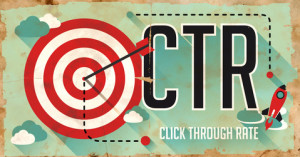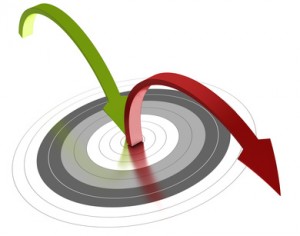
How many times have you received an email promising increased search engine rankings for your website in the last month? If you dig through your spam folder you’ll probably find at least a handful. The main question is, “How do I increase page CTR?”. The answer can be a number of different things, but the end result is providing the user with what they are looking for.
Rank and Click Through Rate
Most people are savvy enough to understand that obscure promises to boost website rank to the top of Google are false. Let’s say that it does though – you hand a large pile of money to somebody who promises to make sure you are “Number one on Google.” Next thing you know, you really are at number one on Google, somehow.
Don’t forget the fact that Google displays different results to users based on a myriad of personalized variables (even ‘number one’ for a particular search isn’t always in that position for everyone depending on user search history, etc.).
So, now you’re number one on the search results, but suppose you haven’t seen a significant bump in traffic. That is when click through rate needs to be reviewed. You can show up a thousand times on the first page search results, but if the CTR is 2%, you still only got 20 clicks from that great ranking. Top ranking alone doesn’t ensure viewers will actually want to click on that result. A lot of factors come into play and there’s a lot you can do to boost the CTR of your pages.
The following are a few practical ways you can increase your click through rate on results pages.
How to Increase CTR
There’s a lot that goes into boosting CTRs, but that also means you have ample opportunities to find the right combination of methods that works best for your business.
- Relevant Meta Descriptions: Making sure that your description is concise and gets the message across can be crucial. Google recently expanded the length of meta descriptions from 160 to 230 on average, so make sure you’ve adjusted your length to take advantage of that extra space. If you don’t personally adjust your meta description length, Google will automatically fill the missing character space.
- Be Competitive: Research your competition to ensure that your pricing is competitive. If you have the same item priced lower than the competition, you’re almost guaranteed to increase your CTR if you’re using rich snippets. Put your most important information and your ranking keyword in your snippet so it can be crawled by Google, but also read by a potential customer.
- Headlines and URLs: Make sure to include the keyword you’re targeting in your headline and your URL. This will not only help search engines clearly index your page, but it will clearly demonstrate to searchers exactly what your page is about.
- Use Rich Snippets: If you have an Ecommerce site and code your products with structured data, you can take advantage of rich snippets. Not only does this potentially help you rank higher than your site may on its own, but it allows you to display your competitive advantage. This is about doing whatever you can to gain the visual advantage over other competing results.
- Be Observant: When you make a change you think will help, measure your results over time. A/B testing allows for one isolated change at a time to clearly see associated changes. This testing process may take longer, but you will get better results knowing what variables most effect your ranking. In the long run, you’ll end up saving money as well so you only spend it on what it effective for your business specifically. Did average rank and/or CTR increase? If not, you may need to re-evaluate the strategy and content of the page. Search engines tend to reduce search rank for pages which have lower CTRs over time.
- Control what you can: Keep in mind, there will always be market trends. Search traffic for a particular keyword/phrase isn’t always the same. People looking for Halloween costumes probably aren’t doing so in March. However, if your CTR remains high, you are probably giving people what they want regardless of how often it is being searched for.
Keep your eye on the prize. Getting a high ranking for a keyword is only valuable if you are also able to get a high click through rate for your page and take advantage of your placement in the SERP.
Manage Your Bounce Rate
If your CTR is in good shape, the next step you should consider is bounce rate. Reducing the amount of bounces and pogo-sticking (clicking a search result and immediately clicking the back arrow after getting to the page) is equally, if not more important to Google than your organic click through rate.
Google strives to provide the best results for their users and if your particular page has a high bounce rate, it tells the search engine that it’s actually not helpful to searchers. As a result, Google will rank you lower and lower in results pages in an effort to bring stronger pages towards the top position.
You should also want to provide your customers and searchers with the best information possible, so make sure you’re choosing the right keywords and producing long form content that adequately addresses your topic and gives the reader enough information. You need to keep your viewers on the page and give them a reason to stay. Adding images, charts, and links (in addition to thorough content) are just a few easy ways to keep viewers on your page longer to reduce bounce rate.
In Conclusion
Top position SERP ranking means nothing to your small business if you can’t get searchers to click on your page and then stay on it. There are several ways to ensure your result receives high click through rates and low bounce rates, while providing the best information to your potential customer. You may have to go through a trial testing period and try a variety of different methods before you start to see positive changes, but I guarantee that if you follow the tips listed above you’ll see your rank position and CTR increase and your bounce rate decrease.

